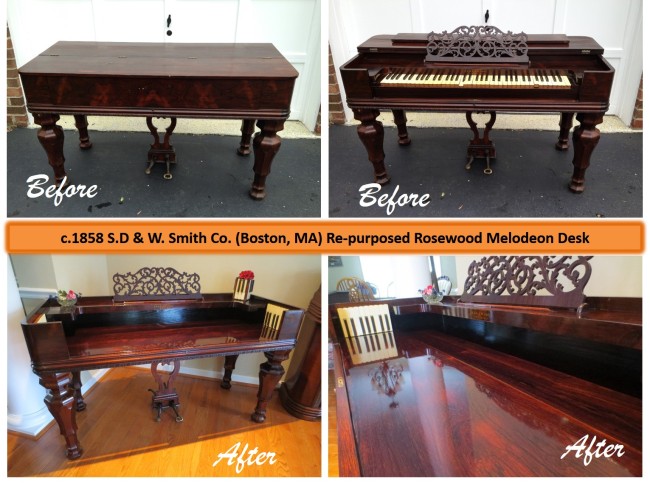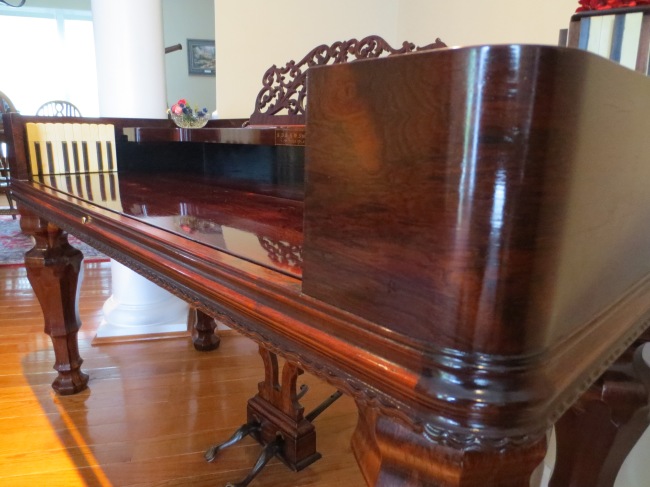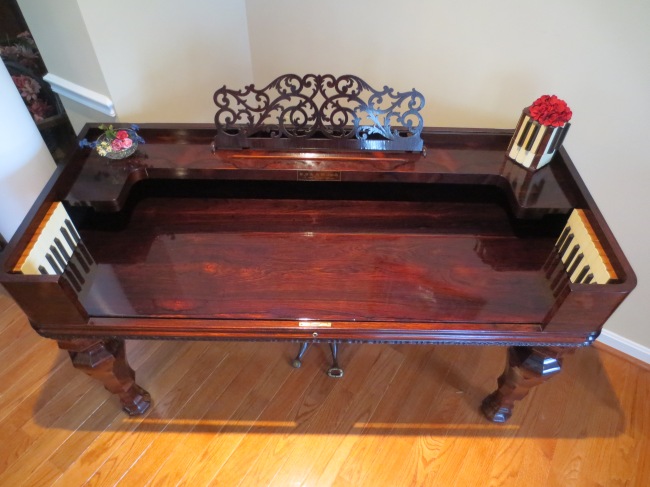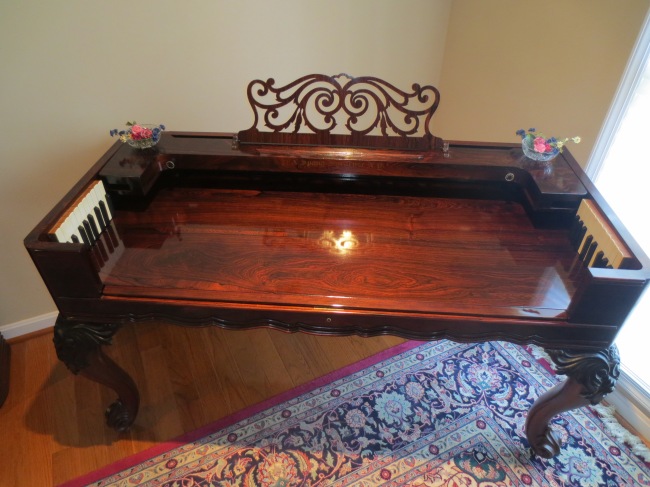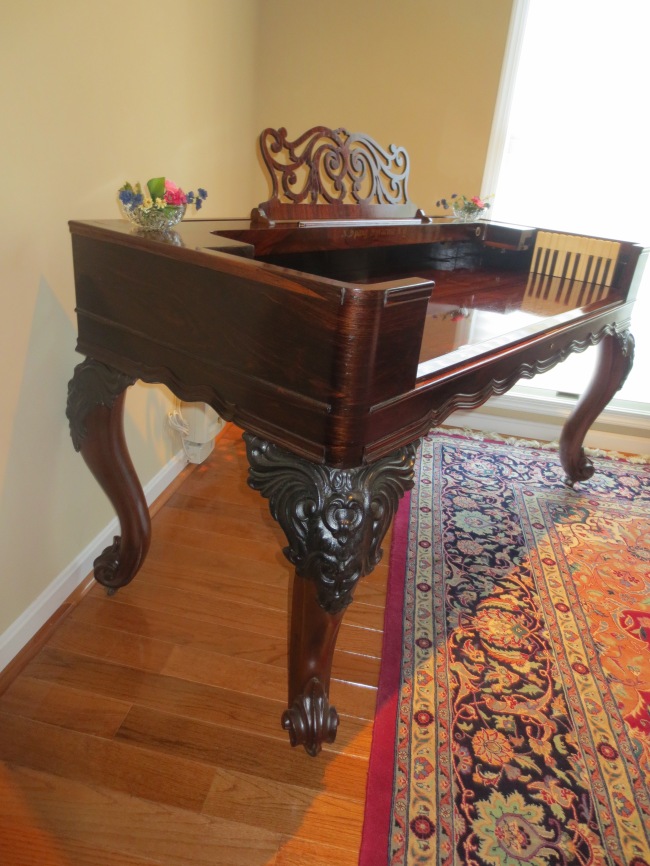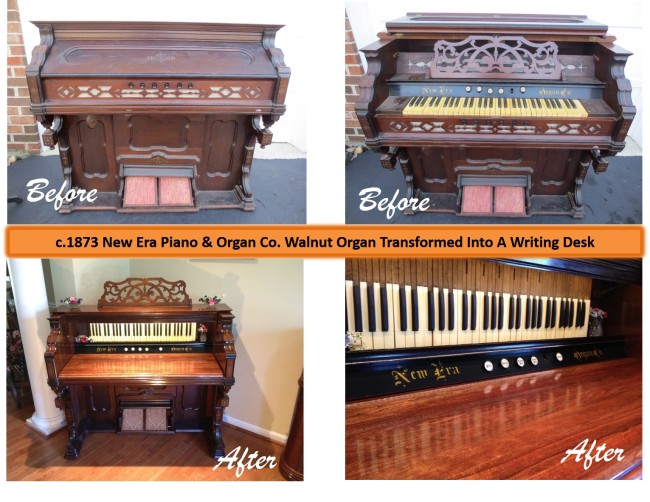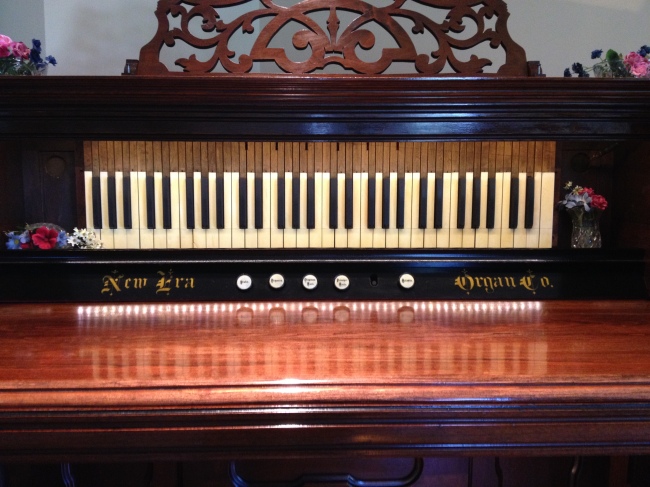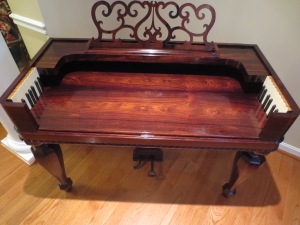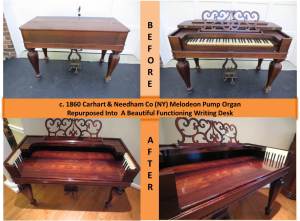
This Farrand oak pump organ is a personal repurpose/restoration job for a customer. It was manufactured in Detroit, Michigan between 1897 and 1914. This two piece non-working pump organ came to me in pretty rough shape, as the varnish finish on it was almost black in color and very crinkled from years of being exposed to the sun and unprotected environmental conditions. I complete disassembled this unit and stripped the old finish off followed by restoring the beautiful golden oak finish underneath the old varnish. I reconstructed the piece as a fully functioning “organ desk” by adding a new tiger oak desktop made from a similar age antique drop leaf table. I then moved the foot control board to a rearward position, thereby make it more comfortable to use as a desk. I then removed the original keyboard and pull stop knobs and placed them toward the rear side of the desktop for esthetics. Lastly, I added remote control LED light strips to the lower foot control unit, the desktop and to the upper hutch unit. This is a beautiful fully functioning family owned desk unit that I believe will allow it to be preserved for decades to come.
















